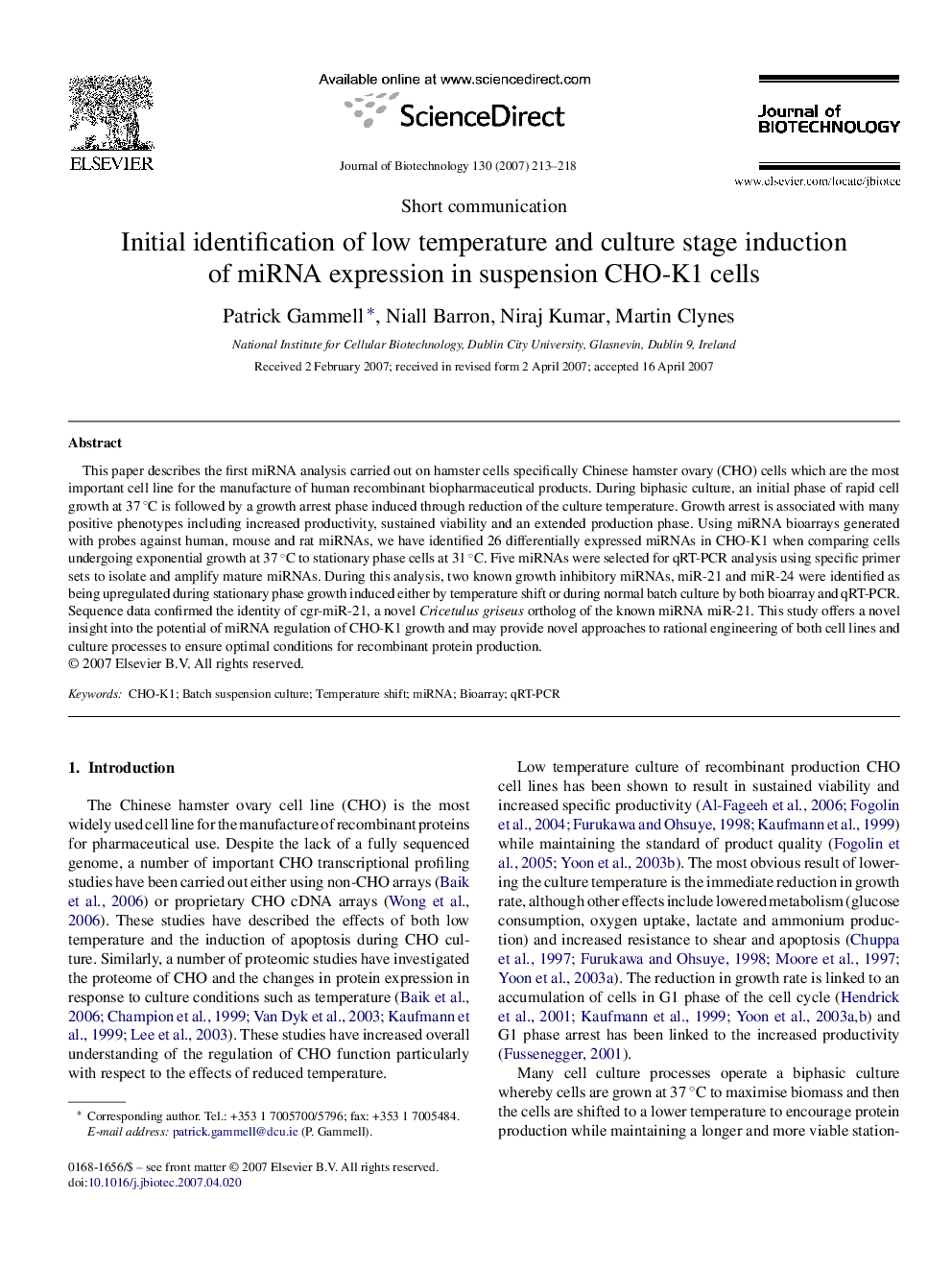| Article ID | Journal | Published Year | Pages | File Type |
|---|---|---|---|---|
| 25215 | Journal of Biotechnology | 2007 | 6 Pages |
This paper describes the first miRNA analysis carried out on hamster cells specifically Chinese hamster ovary (CHO) cells which are the most important cell line for the manufacture of human recombinant biopharmaceutical products. During biphasic culture, an initial phase of rapid cell growth at 37 °C is followed by a growth arrest phase induced through reduction of the culture temperature. Growth arrest is associated with many positive phenotypes including increased productivity, sustained viability and an extended production phase. Using miRNA bioarrays generated with probes against human, mouse and rat miRNAs, we have identified 26 differentially expressed miRNAs in CHO-K1 when comparing cells undergoing exponential growth at 37 °C to stationary phase cells at 31 °C. Five miRNAs were selected for qRT-PCR analysis using specific primer sets to isolate and amplify mature miRNAs. During this analysis, two known growth inhibitory miRNAs, miR-21 and miR-24 were identified as being upregulated during stationary phase growth induced either by temperature shift or during normal batch culture by both bioarray and qRT-PCR. Sequence data confirmed the identity of cgr-miR-21, a novel Cricetulus griseus ortholog of the known miRNA miR-21. This study offers a novel insight into the potential of miRNA regulation of CHO-K1 growth and may provide novel approaches to rational engineering of both cell lines and culture processes to ensure optimal conditions for recombinant protein production.
